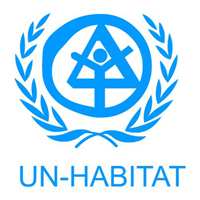Explainer: Everything you need to know about Egypt`s Gaza reconstruction plan
Egypt has developed a comprehensive reconstruction plan for the Gaza Strip, which is counter to US President Donald Trump`s Gaza plan to take over Gaza and displace its Palestinian population.
Ahram Online obtained a draft of Egypt`s reconstruction plan for Gaza. The plan aims to facilitate early recovery and long-term reconstruction efforts led by Palestinians.
It focuses on restoring essential infrastructure, addressing humanitarian needs, and ensuring sustainable development.
Turning Gaza into a smart city
The plan aims to turn the strip into a green city via the following:
- Building smart buildings that utilize renewable energy and modern technology;
- Providing a sustainable economy capable of creating long-term jobs and developing industry, agriculture, and technology;
- Achieving a cultural and educational renaissance that ensures sustainable development in Palestinian society.
Five-sector city
The plan divides Gaza into five main sectors, each with a distinct character and function:
- Sector 1: Rafah for Logistics Centre;
- Sector 2: Khan Younis for Science and Knowledge Centre;
- Sector 3: Deir Al-Balah for Al-Salam Centre;
- Sector 4: Gaza for Government Headquarters;
- Sector 5: North Gaza for Cultural Centre.
Gaza`s urban planning
Gaza will include six basic zones per the urban planning outlined in the Egyptian plan.
Residential zones:
- Low-density: Villas and detached housing with extensive green spaces;
- Medium-density: Mid-rise buildings balancing residential capacity and open areas;
- High-density: High-rise buildings near commercial and transit hubs.
Commercial and mixed-use spaces:
- Integrated zones combining residential and commercial spaces;
- Such areas will include offices and public services to minimize travel and address land constraints.
Service and development corridors:
- The area will include government and administrative headquarters and educational facilities such as schools, hospitals, and cultural centres;
- Regional services headquarters will be located on the area`s outskirts to serve the region and neighbouring areas;
- These regional services will include large commercial centres, government institutions, and transportation infrastructure.
Recreational and tourism zones:
- The zone will feature resorts, parks, beaches, and recreational facilities near the Mediterranean coast;
- It is designed to promote local tourism and leisure.
Central green axis:
- The area will incorporate gardens, green spaces, and walking and cycling paths.
Agricultural and industrial zones:
- Agricultural areas on the outskirts of the city, including small villages, to support self-sufficiency;
- Handicraft and agricultural industries, such as food processing and light manufacturing, generate employment.
Five-year plan in detail
Based on information from the Palestinian Authority, the World Bank, and various international organizations, data has been reviewed and analyzed to formulate a structured roadmap for the reconstruction of Gaza over the next five years. It will accommodate approximately three million people.
This will be executed according to the following stages.
Early Recovery (six months, $3 billion):
- Clearing rubble from the Salah Al-Din (central) axis and preparing for temporary housing;
- Preparing the Salah Al-Din axis as a linking axis for reconstruction work;
- Constructing 200,000 temporary housing units for 1.2 million people;
- Beginning rubble removal and sorting from all areas parallel to the central axis towards the coast;
- Restoring 60,000 partially damaged homes for 360,000 people;
- Implementing a social protection programme and soft loan scheme for self-help rehabilitation.
Reconstruction Phase 1 (two years, $20 billion):
- Completing rubble removal and sorting, using it for coastal area landfill;
- Establishing utilities and networks needed for phase one;
- Building 200,000 housing units and completing the restoration of 60,000 units to house 1.6 million people;
- Constructing essential service buildings for phase one;
- Reclaiming 20,000 feddans of land;
- Continuing social protection programmes and soft loan schemes for self-help rehabilitation.
Reconstruction Phase 2 (2.5 years, $30 billion):
- Establishing utilities and networks needed for phase two;
- Building 200,000 housing units for 1.2 million people, bringing total housing to 460,000 units for 2.75 million people;
- Constructing essential service buildings for phase two;
- Establishing the first phase of the 600-feddan industrial zone;
- Building fishing and commercial ports;
- Constructing 10km of Corniche Road, the first phase of coastal development;
- Building Gaza Airport.
Overall plan:
- The five-year plan is set to conclude by 2030 at a total cost of $53 billion;
- It targets accommodating a population of three million Palestinians, with a density of approximately 35 people per feddan;
- The plan is expected to create 500,000 jobs distributed across sectors as follows:
- Housing: 80,000
- Industry: 70,000
- Tourism: 60,000
- Services: 90,000
- Agriculture: 120,000
- Fishing: 80,000
Funding and international support
The reconstruction plan requires $53 billion in funding, sourced from:
• United Nations, international financial institutions, donor countries, and development banks;
• Foreign direct investment and private sector partnerships;
• A proposed internationally supervised trust fund to ensure transparent and efficient fund allocation.
Egypt intends to host a high-level ministerial conference in Cairo in collaboration with the Palestinian Authority and the UN to garner financial support. This conference will bring together donor countries, international organizations, and private-sector stakeholders.
The Plan’s political side
The war on the Gaza Strip and its humanitarian catastrophe highlights the urgent need for a just settlement ensuring Palestinians` right to an independent state alongside Israel.
A clear political framework aligned with international law is essential to stabilizing the region, advancing the two-state solution, and fostering coexistence.
A – Two-State Path
• The plan prioritizes Palestinian rights, dignity, and the two-state solution, securing both Palestinian self-determination and Israeli security.
• Killing civilians, whether Palestinian or Israeli, must be condemned, and the destruction in Gaza cannot be justified. Ensuring Palestinians` right to remain is crucial.
• The Gaza Strip is integral to the Palestinian land, and separating it from the West Bank undermines peace. Denying Palestinian statehood will fuel further conflict.
• Addressing Gaza’s crisis must respect Palestinians’ right to stay. Forced displacement will only escalate tensions and spread conflict.
• The international community must unite to rebuild Gaza with governance and security arrangements that uphold the two-state solution and prevent new conflicts.
B - Maintaining the Ceasefire
• Global efforts must support Egypt, Qatar, and the US in maintaining the ceasefire and securing captives releases.
• A collapse of the truce would worsen humanitarian conditions and delay reconstruction.
C - Governing the Gaza Strip during Reconstruction
• A gradual approach is needed to ensure Palestinian governance, reconstruction, and a contiguous state based on the 1967 borders.
• Early recovery efforts must respect Palestinian ownership and adhere to international resolutions recognizing Gaza as part of Palestinian land.
• The Palestinian Authority must strengthen its institutions in preparation for full governance.
• As part of preparations for the upcoming phase, the Palestinian government has decided to establish a Gaza Administration Committee to manage the affairs of the Gaza Strip during a six-month transitional period. This committee will be independent, composed of technocrats and nonpartisan figures, and operate under the umbrella of the Palestinian government. Its primary objective is to enable the complete return of the Palestinian Authority to the Gaza Strip and facilitate governance during the transition.
• The international community must now support and encourage these efforts to ensure the administrative committee`s success and allow it to manage the transitional phase effectively.
D – Gaza’s Security and Governance
• To facilitate the Palestinian Authority’s return to governance in the Gaza Strip, Egypt and Jordan are actively training Palestinian police forces in preparation for their deployment. This effort is crucial for establishing law and order and ensuring the security necessary for reconstruction and governance.
• The success of this initiative depends on securing broad political and financial support from international and regional partners.
• A UN Security Council resolution could establish an international presence in Palestinian territories to enhance security and aid state-building.
• The issue of armed factions can only be resolved through a credible political process restoring Palestinian rights.
Israel genocidal war
The 15-month-long Israeli genocidal war has left the city in ruins.
Human and economic toll of the conflict
Since 7 October 2023, the Israeli bombardments have resulted in the following:
• 47,000 deaths, including 13,000 children and 7,200 women;
• 111,000 injuries as of January 2025;
• The displacement of over two million people, facing severe shortages of necessities;
• $29.9 billion in material damage and $19.1 billion in economic and social losses;
• Total estimated recovery and reconstruction needs: $53 billion.
Sectoral damage and recovery needs
The conflict has caused extensive destruction across key sectors:
• Housing: $15.8 billion in damage, 330,000 buildings affected;
• Roads: 1,190 km destroyed, with 1,440 km damaged;
• Healthcare: $1.3 billion in damage; 18 hospitals out of service;
• Education: 88 percent of schools were destroyed; $4.1 billion is needed for
rebuilding;
• Commerce & Industry: $5.9 billion in damage;
• Electricity: $450 million in losses;
• Water & Sanitation: $1.5 billion in damage.
Related
Cairo Summit: Arab leaders adopt Egypt`s Gaza reconstruction plan - as it happened
Israel demands `full demilitarisation` as new condition for phase two of Gaza ceasefire
Photo: Palestinian children carry food past destroyed buildings at the Nuseirat refugee camp in the central Gaza Strip. Source: AFP.














